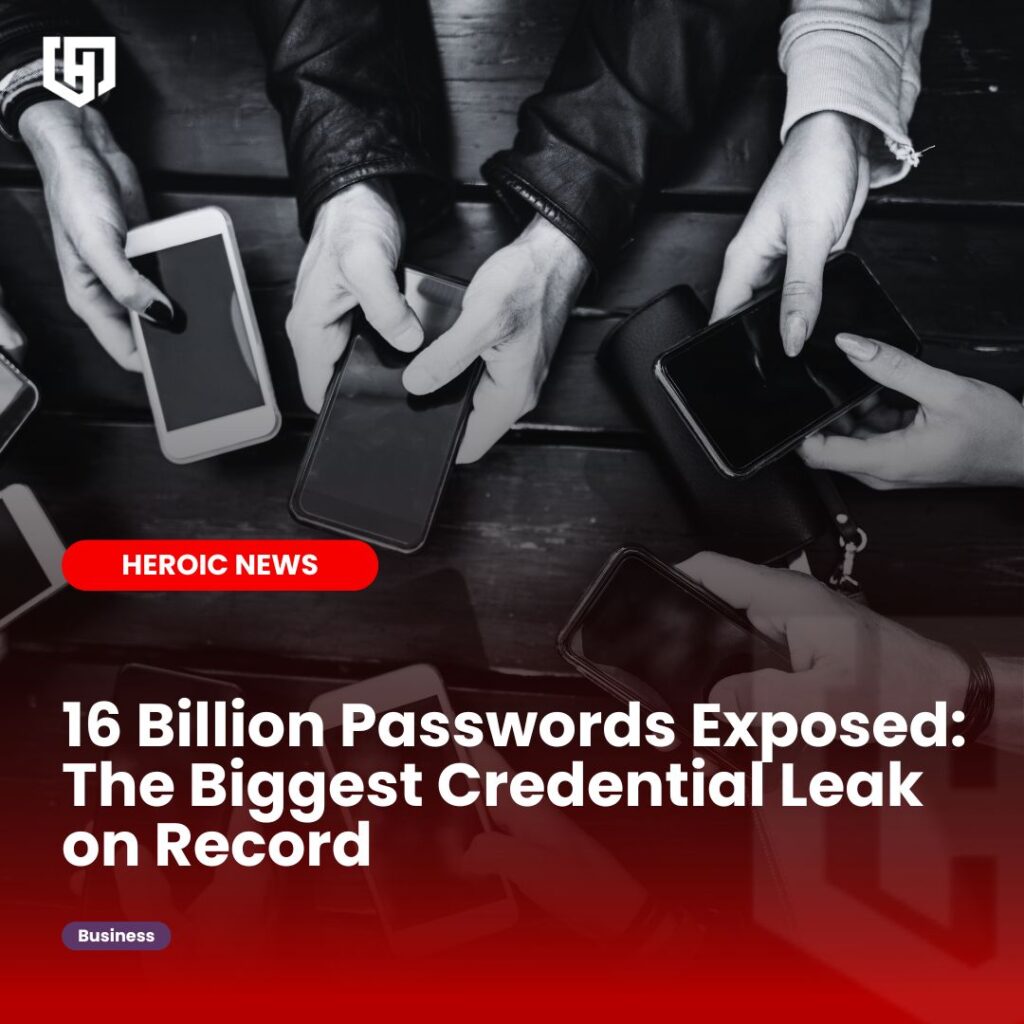Beyond the Single Domain Scan
When it comes to protecting your organization from data breaches, what you scan is just as important as how you scan it. Many companies still follow the industry-standard approach of monitoring only their primary email domain for exposed credentials on the dark web. In practice, this means they scan for breaches involving accounts like *@yourcompany.com and call it a day. This single-domain focus is better than nothing, but it’s also a narrow view of a much bigger picture.
Think about it: If your CFO’s personal Gmail account was compromised in a breach, would your domain-only scan catch it? What if hackers leaked credentials tied to a little-known sister company or an old subdomain? A root domain scan would likely miss these threats altogether. In an era where 86% of breaches involve stolen or weak passwords, limiting your vision to one domain leaves dangerous blind spots. To truly stay ahead of modern threats, we need to widen the lens.
The Status Quo: Single Domain Scanning and Its Limits
Most dark web monitoring tools today stick to the basics: they scan for any mention of your organization’s primary domain in breach data. This yields some data breach intelligence – typically alerting you when employee email addresses (like alice@yourcompany.com) and passwords show up in credential dumps or hacker forums. It’s a crucial first step in detecting compromised accounts. However, this approach assumes that all relevant user identities in your company share the exact same email domain. In reality, organizations are far more complex.
What single-domain scans miss: Plenty of exposure can happen outside the confines of your main corporate email domain. Employees (especially tech and exec teams) often use personal emails for work-adjacent accounts (think LinkedIn, GitHub, or SaaS tools). Subsidiaries or regional branches might operate under different web domains. Your company might also own sister domains (for example, yourcompany.co.uk for the UK branch, or product-specific domains) that store user data. If any of these get compromised, a root-domain-only scan won’t raise the alarm. The result? Partial protection at best.
There’s also the issue of context. A single-domain scan typically just tells you “X accounts on your domain were found.” It doesn’t consider other clues that might indicate a breach of your infrastructure, like mentions of your IP addresses or even the company name in breach corpuses. All of these indicators can be invaluable in identifying an attack early. Simply put, scanning one domain is like locking only your front door – it’s a good start, but what about the side doors and windows?
The HEROIC Difference: Full Domain Profile Scanning
HEROIC takes a more holistic approach to what we call Breached Identity Intelligence. Instead of peering through a keyhole (one domain), HEROIC opens the entire panoramic view by scanning a full domain profile of identity elements for each organization. In practice, this means you’re not just monitoring one domain – you’re monitoring a whole constellation of digital identifiers associated with your business.
HEROIC’s breach intelligence platform allows you to add multiple identity assets for monitoring – from domains and IP ranges to personal accounts – ensuring no exposure goes unseen.
Here are some of the identity assets that a full domain profile scan can include:
-
Primary Domain – Your main company domain (e.g.
yourcompany.com), including all email accounts on it. -
Subdomains & Sister Domains – Any additional domains your organization owns or operates (regional domains, product domains, affiliate or subsidiary domains).
-
IP Ranges and Addresses – Public IP addresses known to belong to your company, which can appear in breach data or malware logs (a sign that a device in your network may be compromised).
-
Company Names & Brand Keywords – Mentions of your organization’s name in breach databases or dark web postings, to catch leaks even when domain emails aren’t explicitly listed.
-
Executive Personal Emails – High-value individuals’ personal email addresses (like a CEO’s personal account) that, if compromised, could be used to infiltrate the organization.
-
Other Identity Markers – Usernames, phone numbers, or other unique identifiers tied to your company or personnel.
By scanning across this wider profile of identities, HEROIC’s platform dramatically increases the chances of catching a credential exposure early. It’s about casting a wide net: hackers don’t limit their targets to just your corporate email domain, so neither should your monitoring. This comprehensive scanning is performed using HEROIC’s Identity Breach Intelligence Platform™ (known as DarkWatch), which is purpose-built to discover and prevent credential-stuffing and account takeover attacks (ATO). In other words, HEROIC is watching all the ways a bad actor might try to slip into your network, not just the front door.
Why Comprehensive Scans Matter in the Era of Stealer Logs and Dark Web Exposures
In 2025, the threat landscape is evolving quickly – and one of the biggest game-changers has been the rise of stealer logs on the dark web. Stealer logs are caches of data siphoned by infostealer malware from infected devices. Every day, millions of these logs (containing saved passwords, browser cookies, auto-filled credit cards, and more) get dumped or sold online. Why should businesses care? Because these logs often include corporate credentials or other sensitive info that give attackers easy initial access to company systems.
Here’s the kicker: more than half of recent ransomware victims had their company’s domain credentials found in stealer log databases. This means an employee’s machine got infected by malware, their work login (and likely a bunch of personal logins) were swept up, and that information was later used to breach the company. In many cases, the presence of corporate logins in such logs is due to individual staff using work credentials on personal devices or vice versa. A traditional root-domain scan might catch the corporate email in a breach, but it might not catch, say, the personal email the employee also saved in their browser with the same password. Identity intelligence is about connecting those dots.
By scanning a full profile, HEROIC’s platform can identify these kinds of exposures more effectively. For example, if a stealer log shows an entry with one of your corporate IP addresses or device names, HEROIC can flag that even if the login was a personal account – a strong sign that a device in your company was infected. If a trove of leaked data includes your CEO’s personal Gmail address, HEROIC will catch that too and alert you, since that address is part of the monitored profile. This broad visibility is crucial because personal accounts can absolutely lead to corporate breaches. Google’s Mandiant team recently warned that personal email compromises (PEC) of executives are increasingly being used to facilitate corporate credential theft and device breaches. In other words, attackers go after the weakest link – which might be an exec’s poorly secured personal account – and then leverage it to break into the corporate crown jewels.
Comprehensive scans also help address subtle threats like typosquatting or close variants of your domains appearing in breach data (which could indicate phishing campaigns against your employees or customers). While the focus here isn’t brand protection per se, knowing if a lookalike domain of yours shows up in leaked credential sets can tip you off to ongoing fraud attempts.
In summary, the combination of widespread credential leaks, stealer log markets, and creative attack techniques means you can’t afford tunnel vision. A full domain profile scan gives you the peripheral vision needed to spot danger coming from any direction on the dark web.
From Detection to Action: Dark Web Monitoring & ATO Protection with HEROIC
Finding exposed credentials is only half the battle – the real goal is to detect, investigate, and remediate those exposures before they lead to account takeover. This is where HEROIC truly stands out from “basic” monitoring services. The platform doesn’t just dump raw breach data on your lap; it provides actionable identity intelligence and workflows to respond effectively.
For one, HEROIC’s data breach intelligence platform (backed by the massive DarkHive™ breach database) gives rich context for each exposure. When a credential is found, you get details like where it came from (a database leak, a stealer log, etc.), which email or username and even associated password (hashed or plaintext) were exposed, and any other data points (IP, date, source) to help assess the severity. The system is designed to make this data immediately useful. In fact, HEROIC’s database will display all the information you need – email, password, username, IP, and more – so your team can properly remediate the issue. Remediation might mean forcing a password reset, invalidating sessions, scanning the involved device for malware, or all of the above. The key is that you know exactly which accounts and systems are at risk.
HEROIC also integrates this monitoring into a broader Account Takeover Protection (ATO) strategy. EPIC, the enterprise platform, not only discovers leaked credentials but actively helps prevent their use in attacks. For example, with timely alerts and its real-time monitoring, your security team can respond before an attacker exploits the stolen password. If hackers are trying credential stuffing attacks using a password from last month’s breach, HEROIC’s intelligence would have prompted you to secure that account long before. This proactive stance is what transforms dark web monitoring from a passive notification system into an active defense mechanism.
Importantly, HEROIC achieves all this without making direct comparisons to competitors – it simply goes further than the typical practice. Most vendors will monitor your domain; HEROIC monitors your identity footprint. It’s an implicit differentiation: rather than focusing on just one slice of the pie, HEROIC wants you to have the whole pie in view. All those extra identity signals (sister domains, personal emails, IPs, etc.) feed into HEROIC’s analytics and incident response capabilities to paint a fuller picture of your exposure. The result is a higher chance of detecting a breach early and a lower chance of being blindsided by an account takeover.
Conclusion: A Holistic Shield for Modern Threats
In today’s threat landscape, protecting your enterprise is about seeing the bigger picture. Scanning a single root domain might have been the industry norm, but it’s a bit like wearing blinders when you need a panoramic view. HEROIC’s full domain profile scanning pulls those blinders off, delivering comprehensive identity intelligence that leaves attackers with nowhere to hide. By encompassing everything from your main domain to the far corners of your digital presence, this approach yields breached identity intelligence that is richer and more actionable than ever before.
The value proposition is clear: more coverage, more context, and ultimately more security. With HEROIC’s platform, you gain the ability to not only detect leaked credentials across a broad range of sources (including those pesky stealer logs on the dark web) but also to investigate them and shut down threats before they escalate. It’s dark web monitoring done right – as a dynamic, wide-angled defense for your organization’s identities. In a world where credentials are prime targets and account takeover protection is a must-have, why settle for scanning only one domain when you can secure the full profile?
References:
-
Verizon Data Breach Investigations Report – “86% of breaches involve stolen, weak, or default passwords.” breachsense.com
-
SOCRadar Research – Stealer logs fuel a surge in account takeovers and corporate breaches; over half of ransomware victims had their domains in stealer logs. socradar.io
-
Google Cloud (Mandiant) – Personal email compromises of executives (PEC) are being used to facilitate corporate credential and device compromise, posing a serious risk to organizations. cloud.google.com
-
ZeroFox Threat Report – The presence of corporate credentials in stealer logs often stems from individual device compromises, not a full enterprise breach (emphasizing the need to monitor personal vectors). zerofox.com
-
HEROIC EPIC Product Page – “EPIC is an Identity Breach Intelligence Platform™ (IBIP) that discovers and prevents credential stuffing and account takeover attacks (ATO).” heroic.com
-
HEROIC DarkHive Technology – HEROIC’s database shows exposed emails, passwords, usernames, IP addresses and more, allowing teams to properly remediate identified breaches. heroic.com





/includes/qr-code.png)